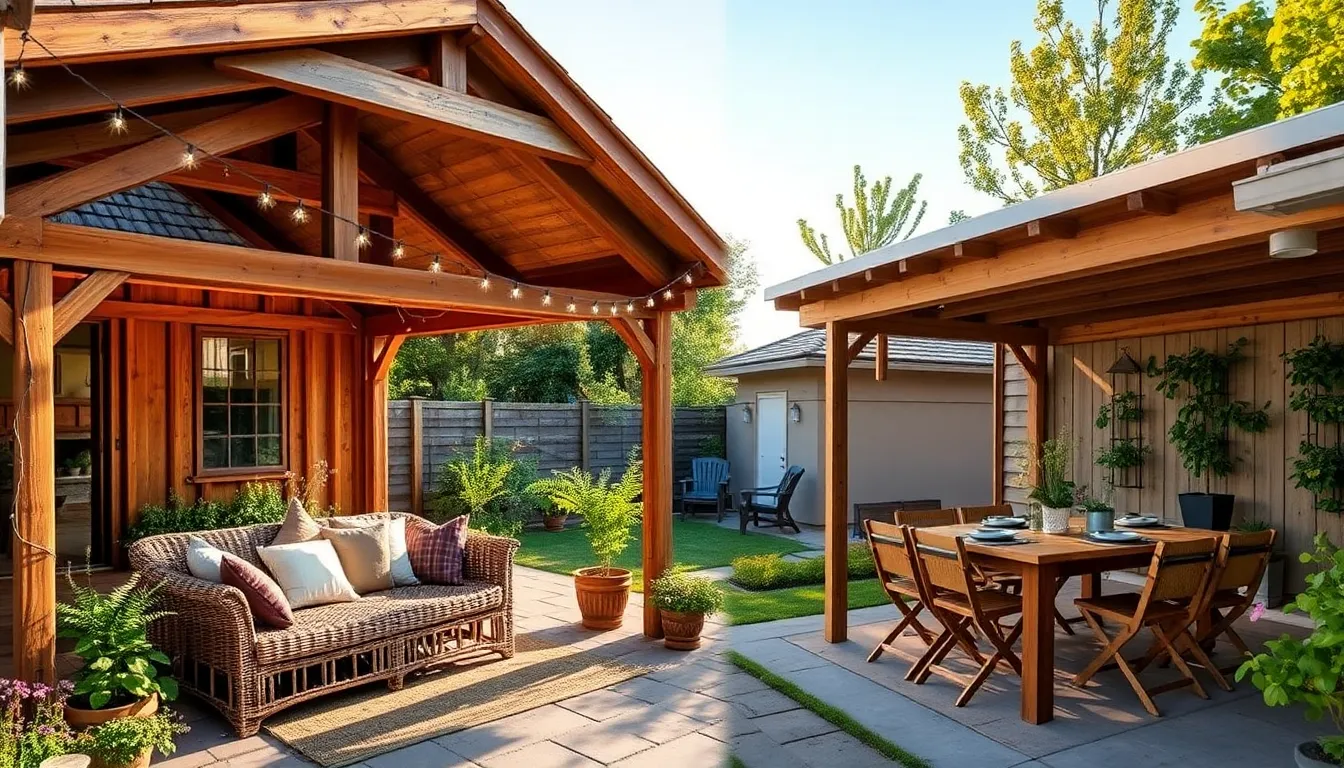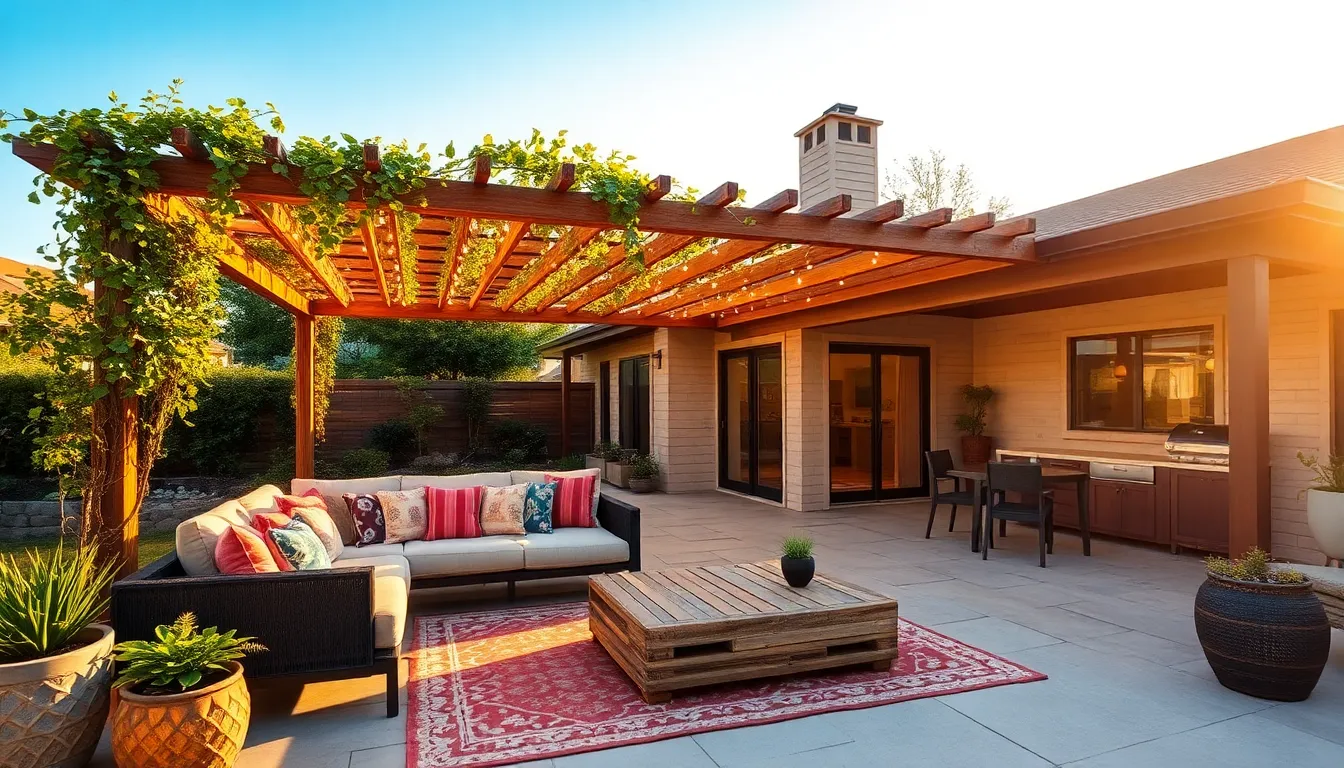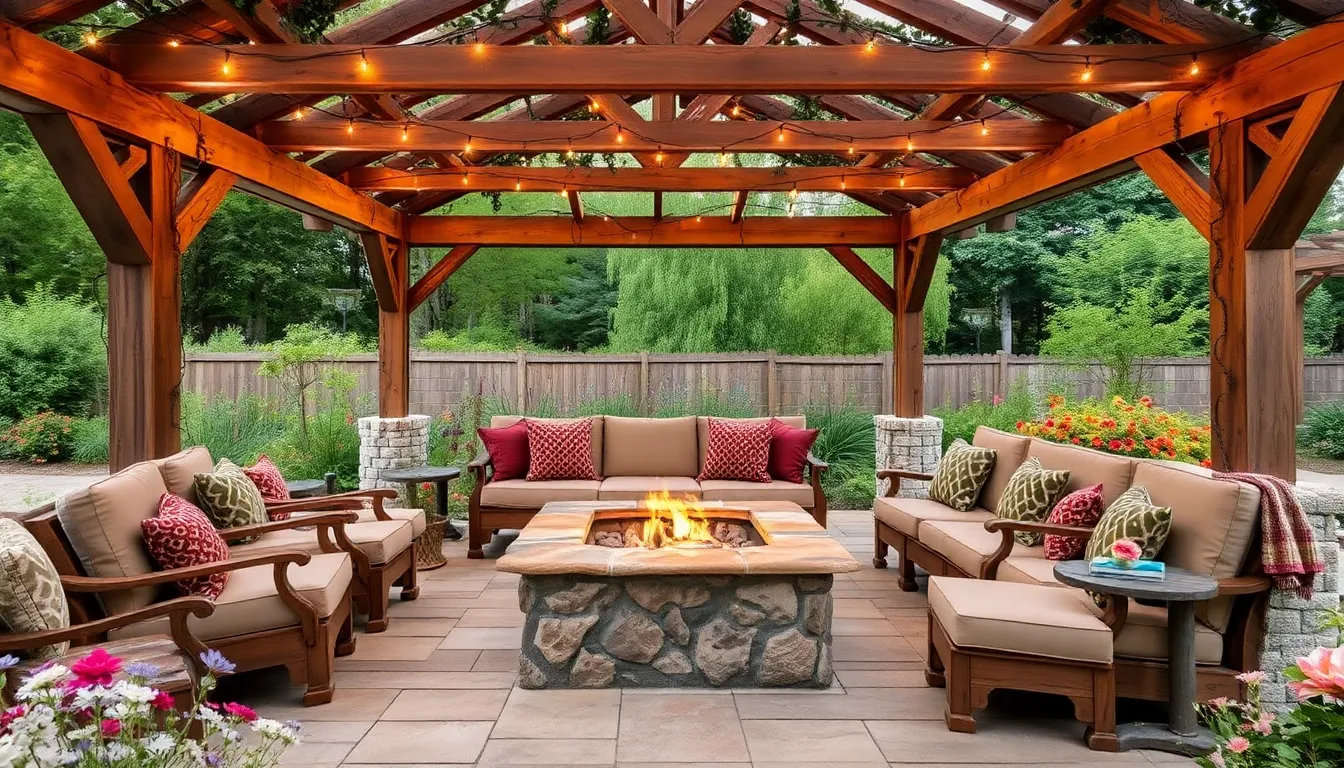Imagine stepping into your backyard to find a wooden covered patio that not only extends your living space but also reflects your personal style. Whether you’re a seasoned homeowner looking to refresh your outdoor area or a beginner eager to create your first cozy nook, the right patio design can transform your outdoor experience into something truly special. Outdoor living is not just about aesthetics; it’s about creating a functional space where you can unwind, entertain, and connect with nature.
In this article, we’ll explore eight distinctive wooden covered patio styles that are both practical and enchanting, offering something for every taste and budget. From rustic retreats to modern minimalist designs, you’ll discover ideas and insights that will empower you to craft a patio that suits your lifestyle and enhances your home’s value. Let’s embark on this journey to redefine your outdoor space, ensuring it’s as inviting and purposeful as your indoor living areas.
Rustic Charm: Traditional Wooden Awnings

Embracing the rustic charm of traditional wooden awnings can transform your patio into a cozy retreat. Start with using durable woods like cedar or redwood, known for their resistance to weather elements. For a simple design, consider a sloped awning with exposed beams, accentuating their natural grain. Beginners can opt for prefabricated kits, which offer easy assembly and ensure a sturdy build.
To elevate this style, integrate decorative elements such as carved brackets or lattice side panels, adding both support and visual appeal. Advanced DIYers might explore custom staining techniques to enhance the wood’s natural beauty, creating a personalized touch.
- Ensure the awning extends at least 2-3 feet beyond seating areas to provide ample coverage.
- Use weatherproof sealants to maintain wood longevity and appearance.
With thoughtful design, your wooden awning will become a cherished outdoor feature.
Modern Elegance: Sleek Slatted Ceilings
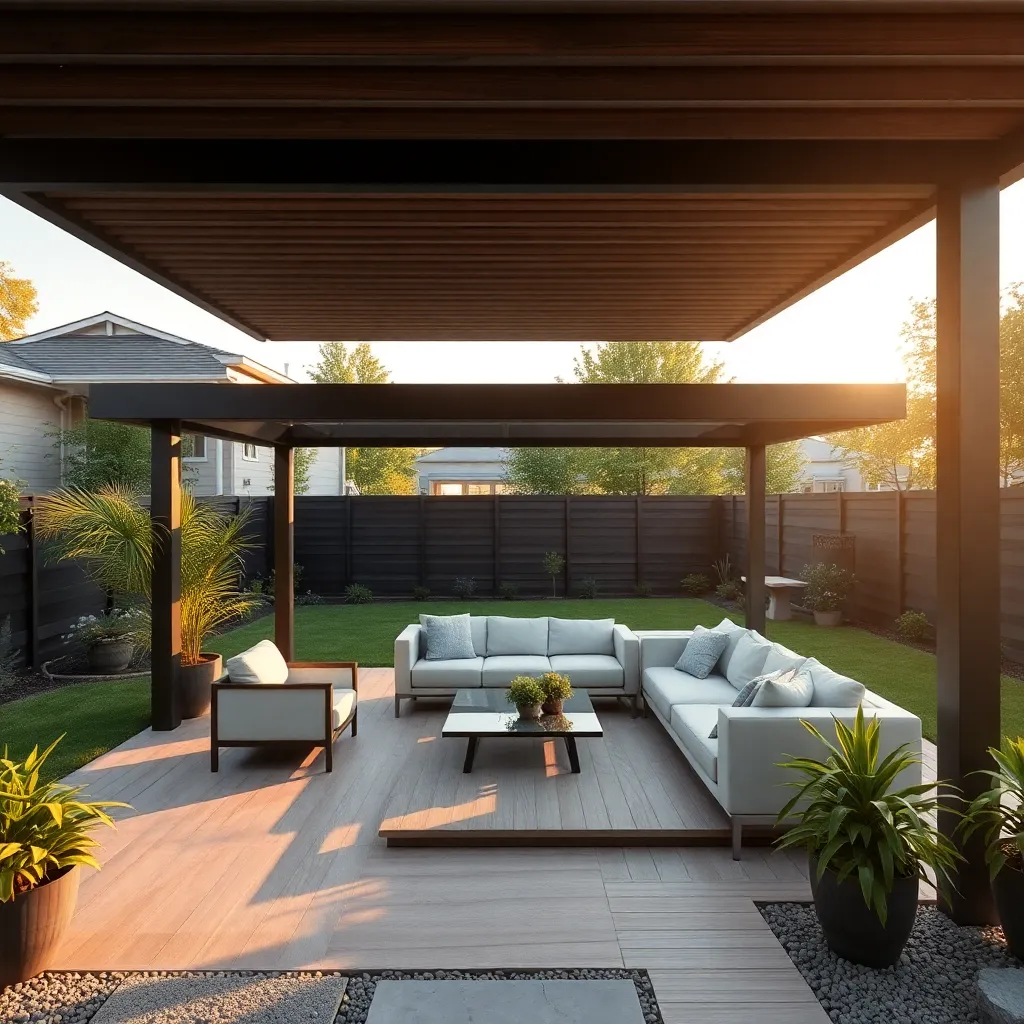
Incorporating a sleek slatted ceiling into your patio design adds a touch of modern elegance, providing both style and function. This design allows for partial sunlight to filter through, creating a dynamic play of light and shadow that enhances the ambiance. For homeowners looking to adopt this style, consider using weather-resistant woods such as cedar or redwood, which not only offer durability but also a beautiful natural finish.
For those ready to take a hands-on approach, using slats of varying widths can add visual interest and create a more custom look. Spacing the slats evenly—typically 1 to 3 inches apart—is crucial for achieving that clean, contemporary feel. Beginners should ensure all slats are securely fastened to a sturdy frame using galvanized screws, while experienced DIYers might explore incorporating hidden fasteners for a seamless effect. By selecting the right materials and following these construction tips, you’ll create a standout patio feature that blends sophistication with practicality.
Pergola Perfection: Open-Air Designs
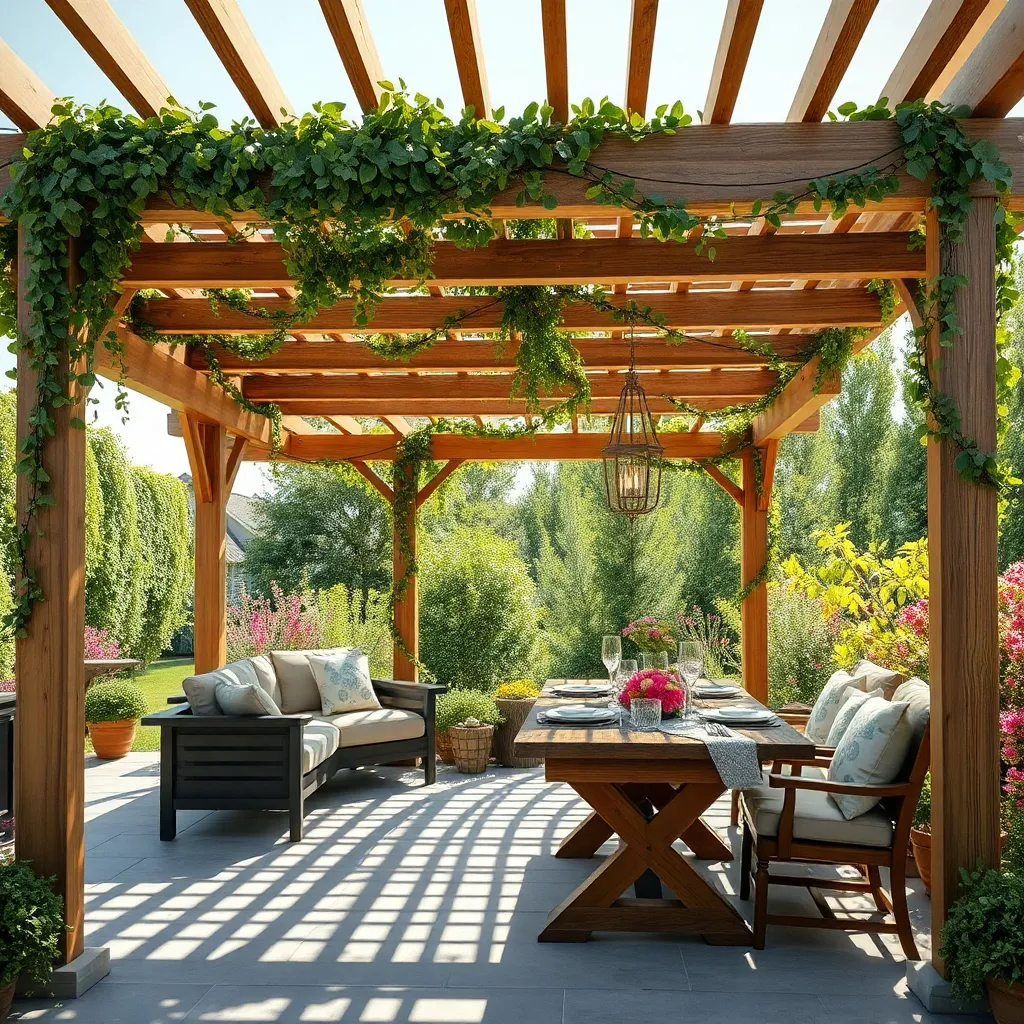
Transform your outdoor space with a pergola that combines both style and functionality. Begin by choosing durable wood like cedar or redwood, which resist decay and insects, ensuring longevity. For a basic design, opt for a rectangular frame with evenly spaced slats that allow sunlight to filter through while providing shade. Ensure the pergola is proportionate to your patio space; a common size is around 10×12 feet, but adjust according to your needs. This basic structure can be a delightful starting point for beginners eager to enhance their backyard.
For those ready to elevate their pergola design, consider incorporating decorative elements such as lattice panels or climbing plants like wisteria or grapevines for added texture and natural beauty. Advanced builders might explore integrating features like adjustable louvers or fabric canopies for versatile weather protection. Remember to seal your wood with a UV-protective finish to maintain its natural beauty. By thoughtfully selecting materials and design elements, you’ll create a pergola that serves as a striking centerpiece for your outdoor area, perfect for gatherings or quiet relaxation.
Cozy Retreat: Enclosed Gabled Patios
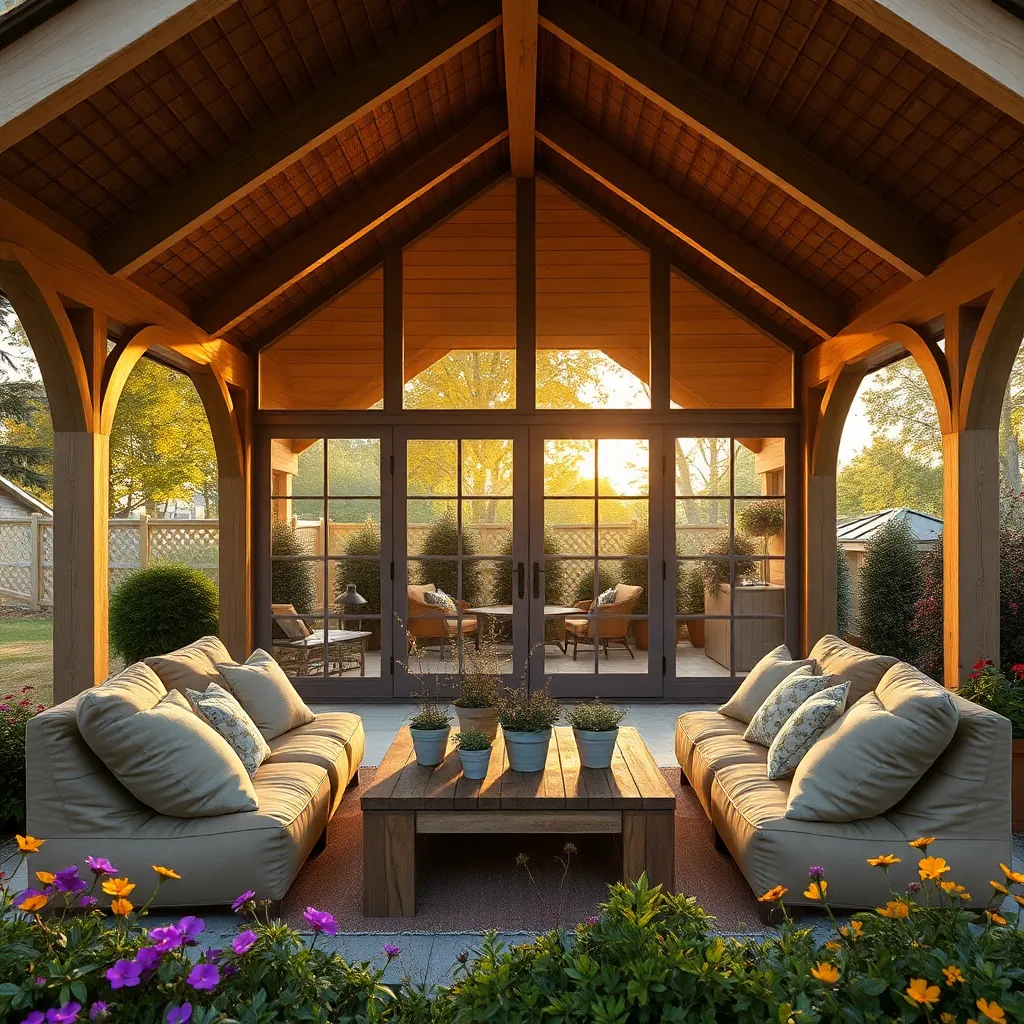
Creating a cozy retreat with an enclosed gabled patio is an excellent way to enjoy the outdoors while staying protected from the elements. These structures feature a classic gable roof, which not only adds aesthetic appeal but also allows for greater airflow and natural light. For those starting out, consider using pressure-treated wood for durability, and ensure your patio’s dimensions are at least 10×12 feet to comfortably accommodate outdoor furniture. Installing windows or screens can provide ventilation while keeping insects at bay, making your space usable year-round.
For a more advanced touch, incorporate skylights into the gabled roof to enhance the natural light. Opt for tempered glass or acrylic panels to withstand weather conditions. When designing, ensure the pitch of the roof is appropriate for your region’s climate; steeper pitches are ideal for areas with heavy snowfall, while gentler slopes work well in milder climates.
- Use stainless steel hardware
- Apply a weather-resistant sealant
- Consider adding built-in seating for convenience
These elements will not only increase the longevity of your patio but also elevate its comfort and usability.
Minimalist Appeal: Flat Roof Concepts
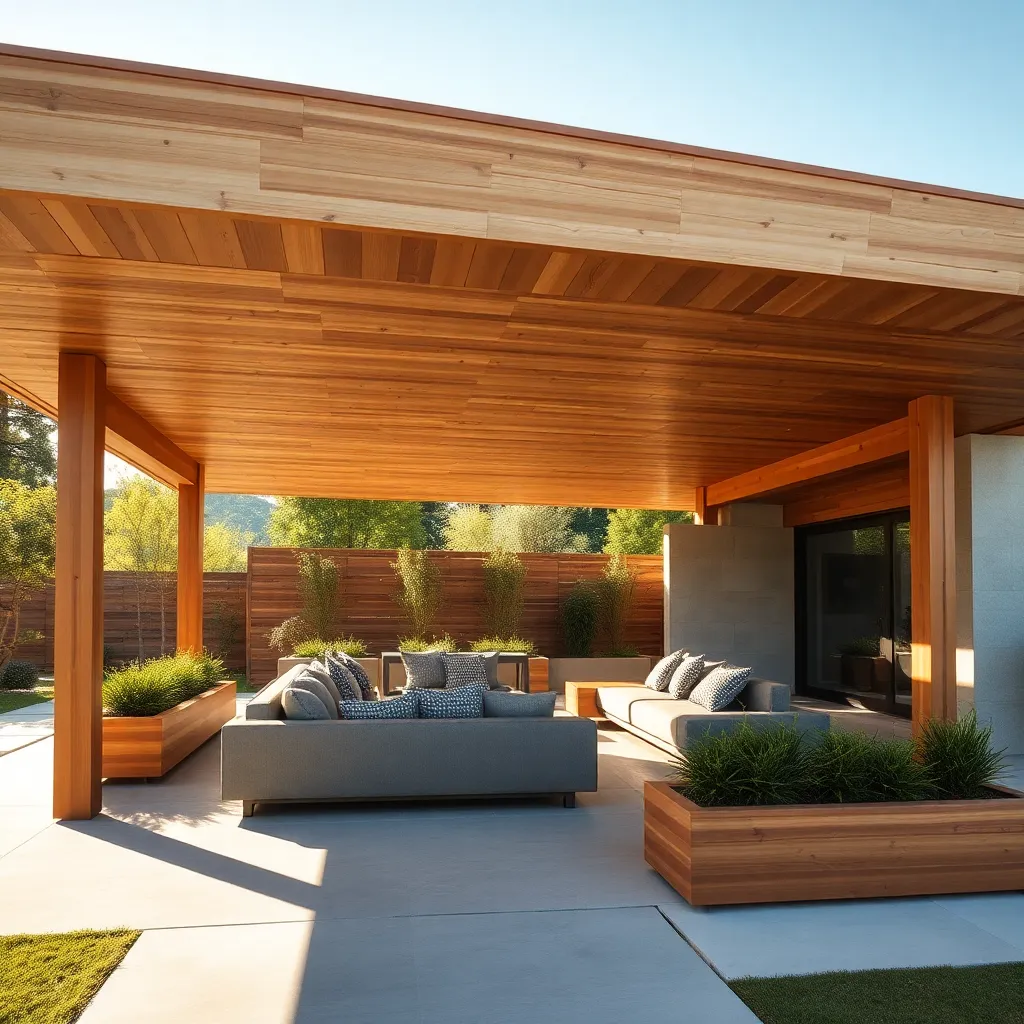
For homeowners seeking a sleek and modern look, flat roof concepts offer a minimalist appeal that seamlessly blends with various architectural styles. To achieve this style, consider using materials like treated wood or composite decking for the structure, ensuring durability and weather resistance. A flat roof is not only visually striking but also practical, providing easy installation of solar panels or a rooftop garden. Beginners can start by ensuring a slight pitch for water drainage, while more experienced builders might integrate hidden gutters for a cleaner look.
Design elements such as clean lines and open spaces are key features of flat roof concepts, making them ideal for creating a spacious feel even in smaller yards. When planning your design, think about incorporating natural wood stains or muted colors to maintain the minimalist aesthetic. For added functionality, consider using adjustable louvered panels or shades to control sunlight and privacy. Advanced enthusiasts might explore the use of pergola-style extensions or seamless glass doors to connect the indoor and outdoor spaces, enhancing the overall flow and usability of the patio area.
Mediterranean Vibe: Arched Beam Structures
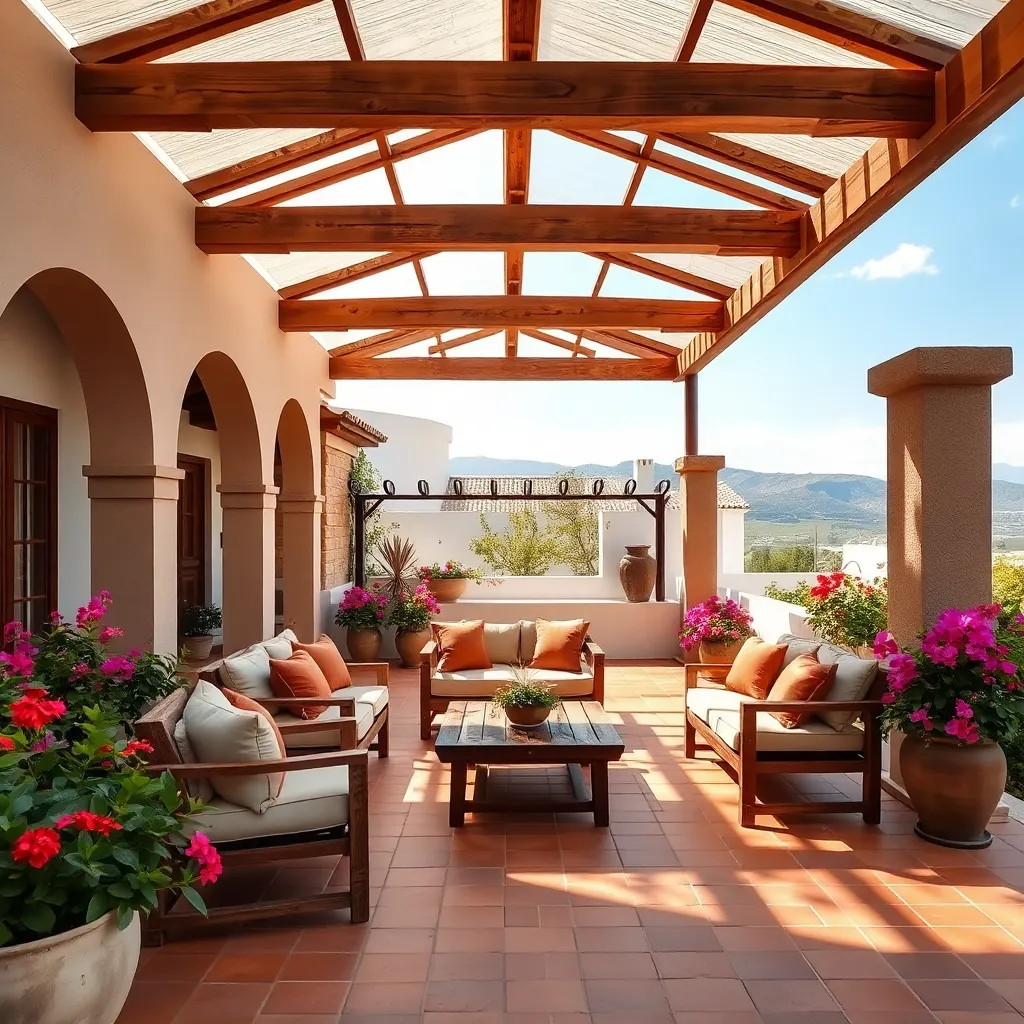
To infuse a Mediterranean vibe into your patio, consider using arched beam structures for an elegant and timeless look. These structures typically feature curved wooden beams that create a classic arch shape, instantly adding architectural interest to your outdoor space. Opt for durable woods like cedar or redwood, which not only provide the necessary strength but also resist weathering. Pair these beams with terracotta tiles or a light stucco finish to enhance the Mediterranean aesthetic.
When building your arched beam shelter, ensure the arches are spaced evenly for a balanced appearance. Beginners can start with a simple arch design and gradually incorporate more intricate elements as their skills improve. For a more advanced touch, consider adding wrought iron details or climbing plants like jasmine or bougainvillea for additional character and charm. By selecting materials that complement your home’s existing design, you can create a cohesive outdoor retreat that feels both inviting and sophisticated.
Eco-Friendly Options: Reclaimed Wood Styles
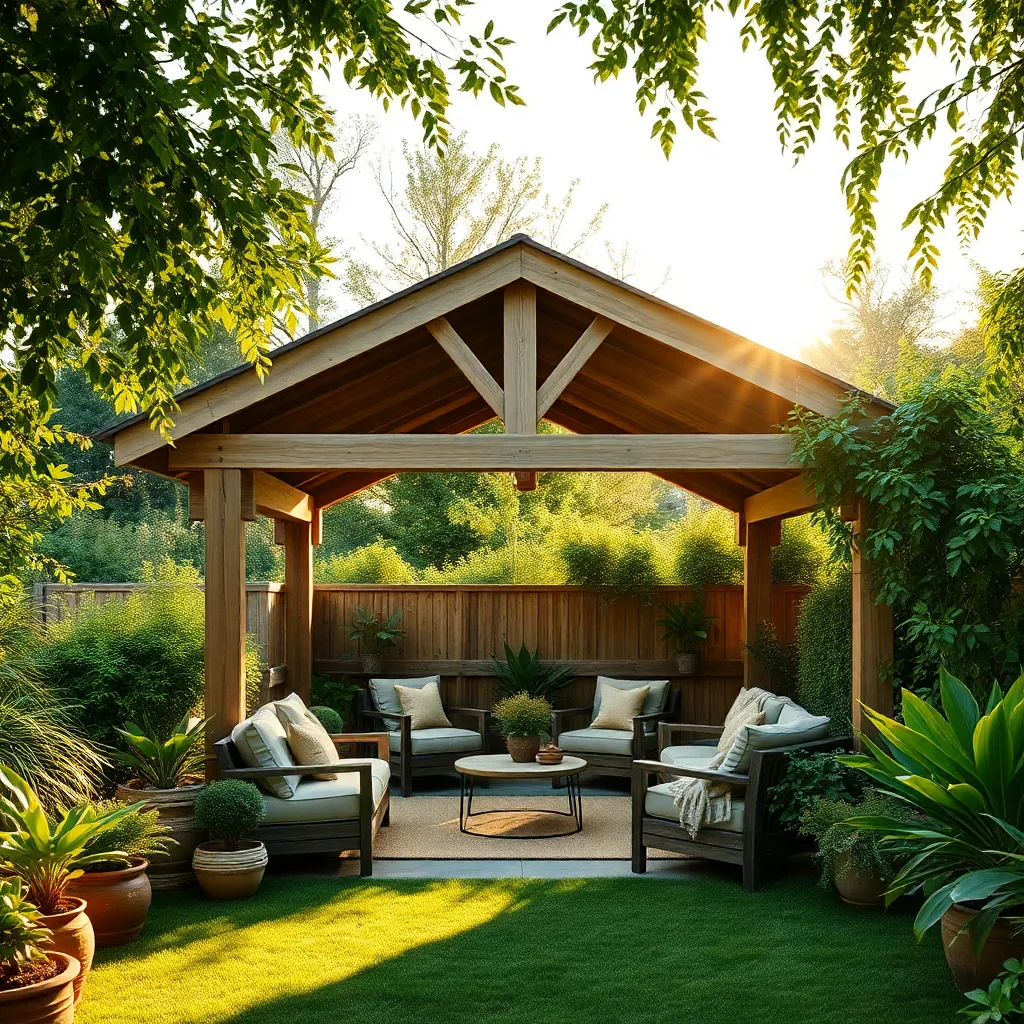
Choosing reclaimed wood for your patio cover is an excellent way to create an eco-friendly outdoor space while adding a touch of rustic charm. Reclaimed wood not only reduces demand for new lumber but also adds unique character with its weathered textures and historical appeal. To begin, source wood from local salvage yards or online marketplaces, ensuring it’s treated for outdoor use to prevent rot and pest damage. Consider using larger beams as focal points in your design to enhance the aesthetic and structural integrity of your patio cover.
For an advanced touch, mix reclaimed wood with other sustainable materials like bamboo or recycled metal brackets for additional support and style. Experiment with different finishes to preserve the wood’s natural patina or add a protective sealant to enhance durability. Beginners can start with simple designs, such as a flat-roof style, which requires fewer cuts and joins. Meanwhile, more experienced DIYers might explore complex patterns, like a pitched roof or latticework, to create a unique visual effect. By combining creativity with sustainability, you can craft a one-of-a-kind patio that respects the environment.
Tropical Escape: Thatched Wooden Covers

Transform your outdoor space into a lush oasis with a tropical escape thatched wooden cover. Using natural materials like palm leaves or synthetic thatch, these covers provide excellent shade while blending seamlessly with garden settings. For a sturdy structure, opt for hardwoods like teak or cedar, known for their resistance to weather and insects. Beginners can start with a simple rectangular design, while more experienced DIY enthusiasts might explore hexagonal or octagonal shapes for added visual interest.
When constructing your thatched cover, ensure the roof pitch is steep enough to allow rainwater to flow off easily, which prolongs the life of the thatching. For effective and durable construction, follow these steps:
- Use pressure-treated wood for the frame to resist decay.
- Space the rafters 16 to 24 inches apart for optimal support.
- Consider adding a waterproof underlayer beneath the thatch for added protection.
With these details in mind, your thatched wooden cover will not only be a practical addition to your patio but also an inviting retreat reminiscent of a tropical getaway.
Conclusion: Creating Beautiful Outdoor Spaces
In exploring the ‘8 Wooden Covered Patio Styles,’ we’ve delved into how diverse approaches to building and nurturing relationships can create a lasting bond. From the foundational strength of trust to the warm embrace of supportive communication, we’ve highlighted the importance of understanding, patience, empathy, and shared experiences. These eight styles symbolize unique aspects of relationships: trust, communication, empathy, compromise, shared goals, adaptability, quality time, and appreciation. Together, they form a sturdy framework that supports and enhances the beautiful complexity of human connections.
As your actionable next step, take a moment today to reflect on one of these relationship styles and identify a small, meaningful action you can implement in your relationship. Whether it’s initiating an open conversation, planning a shared activity, or expressing gratitude, small steps lead to profound changes.
Remember, this article is a resource for your relationship journey. Bookmark it now to revisit these insights and strategies whenever you need inspiration or guidance. As you incorporate these timeless principles, your relationships will not only withstand the test of time but also thrive with renewed depth and resilience. Here’s to building stronger connections and a future of lasting relationship success.

